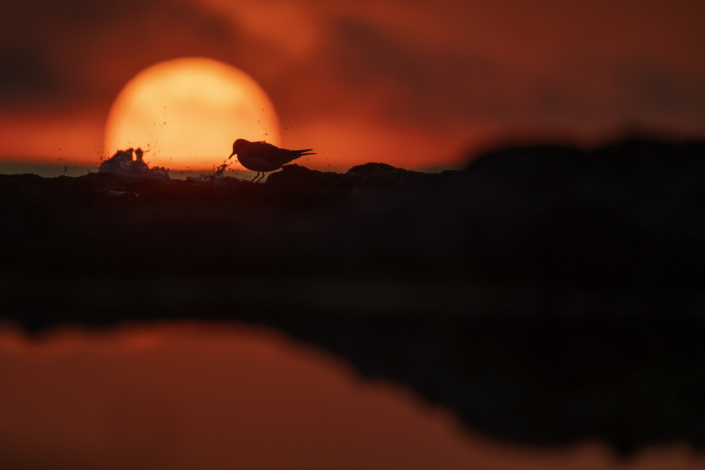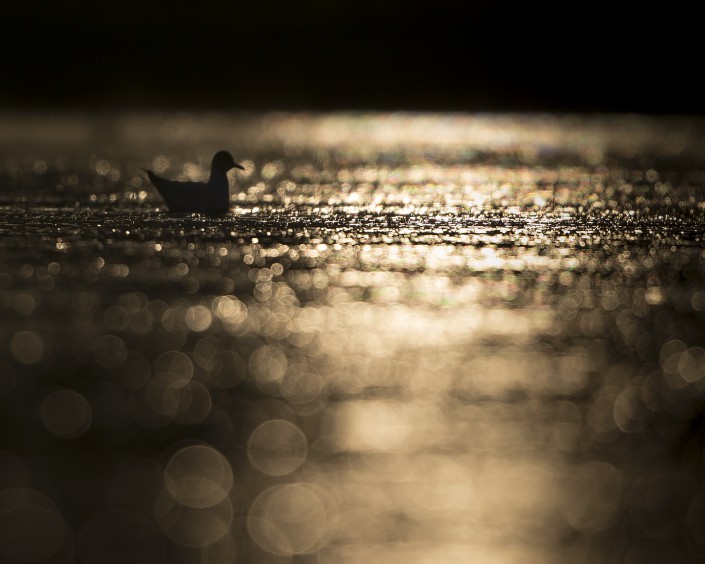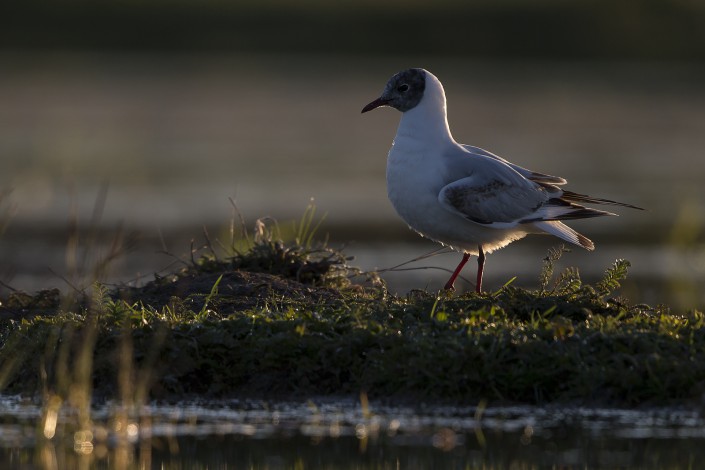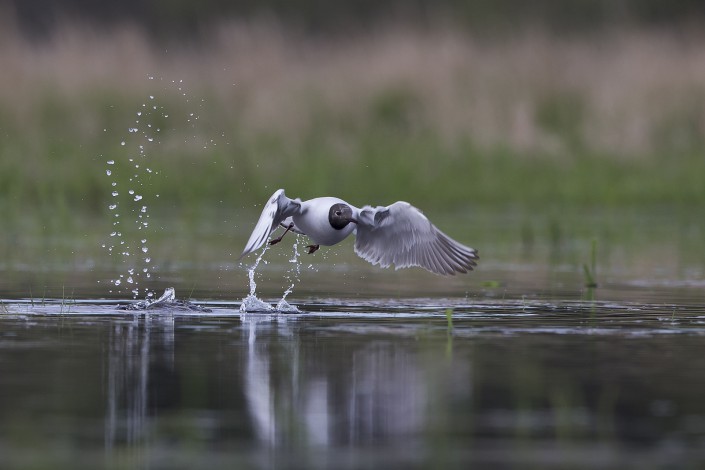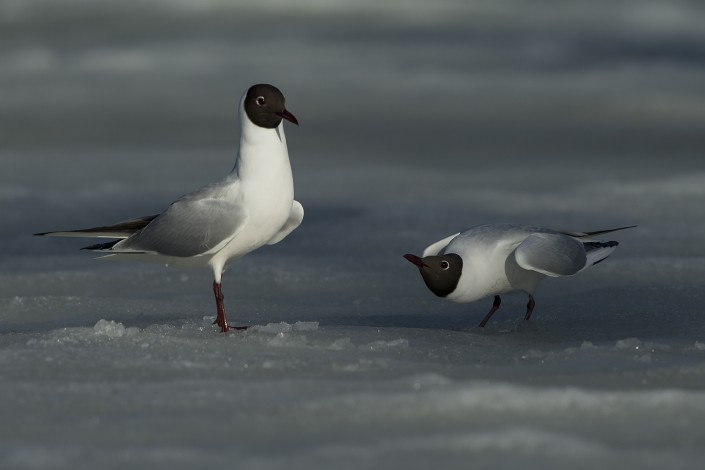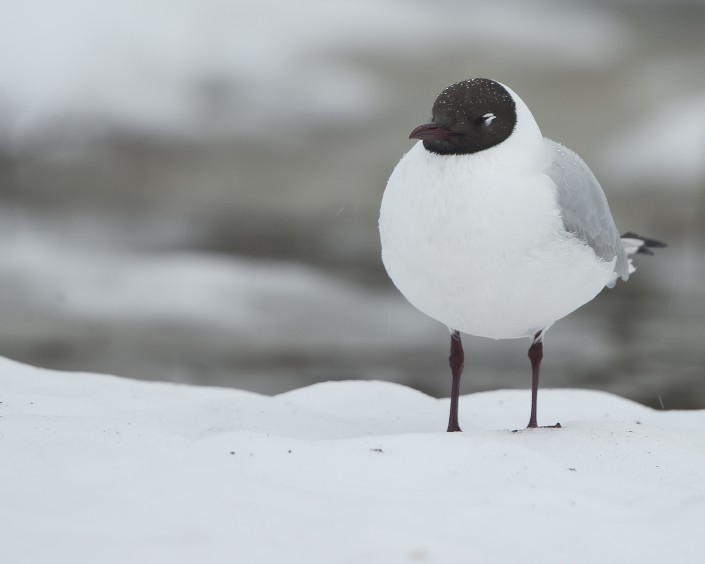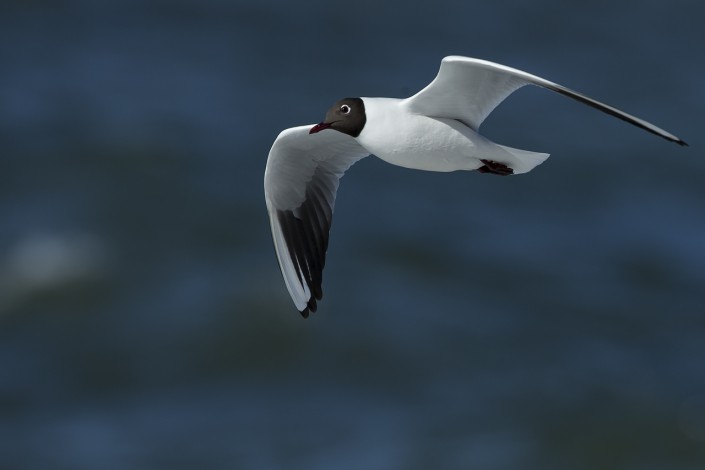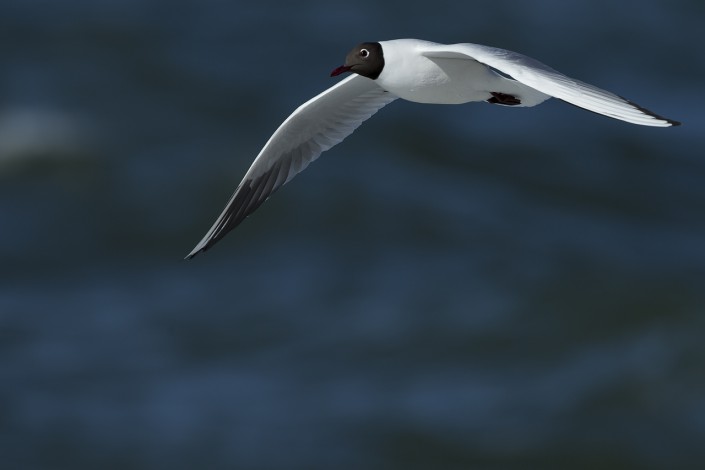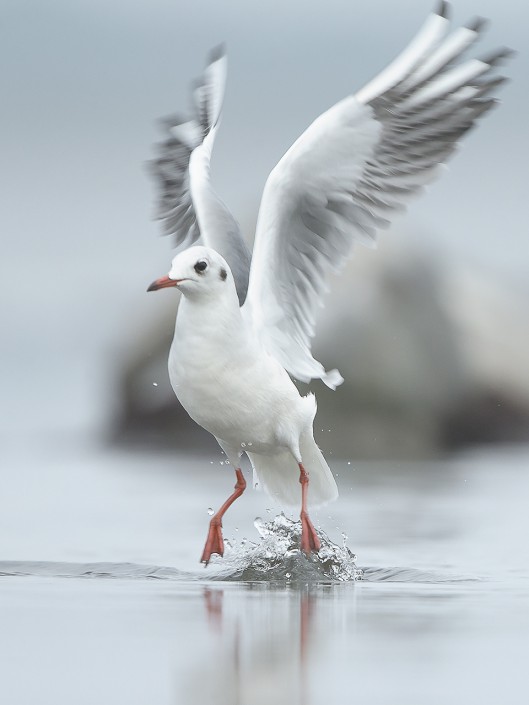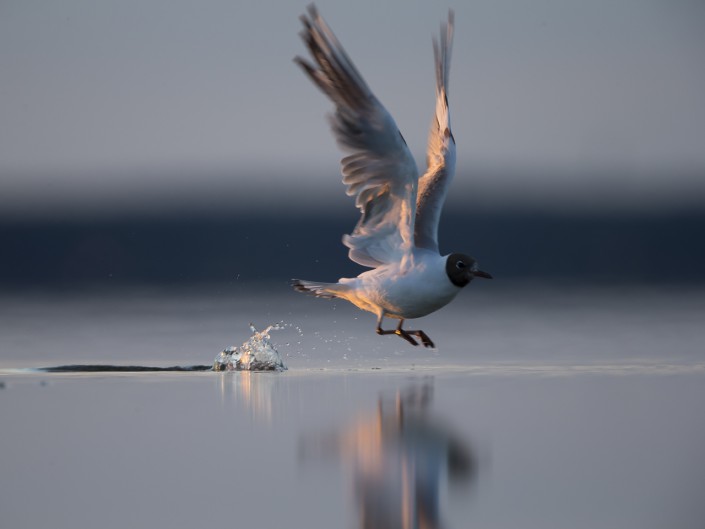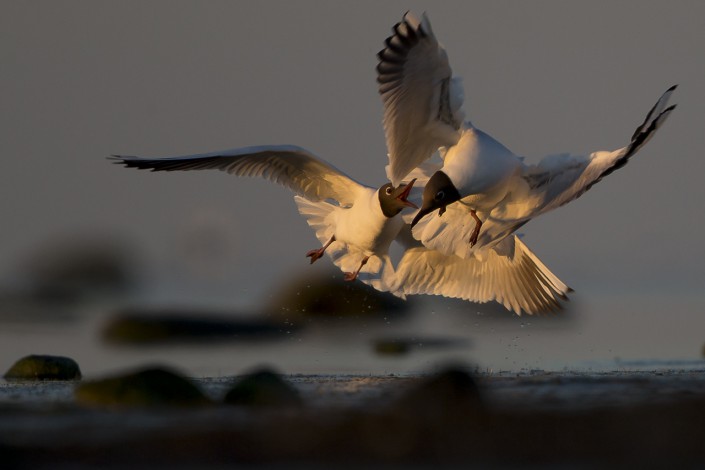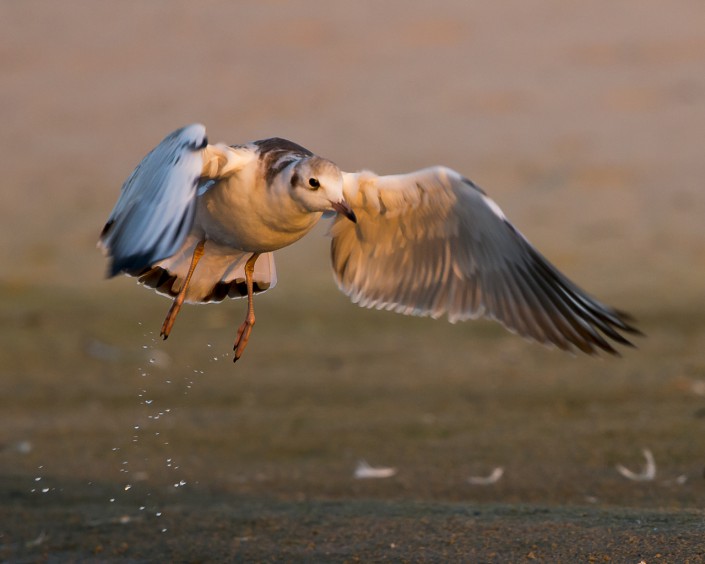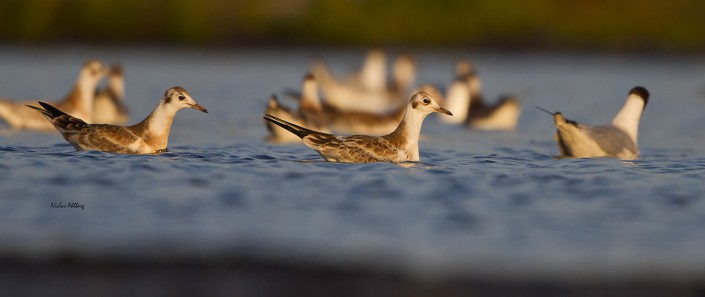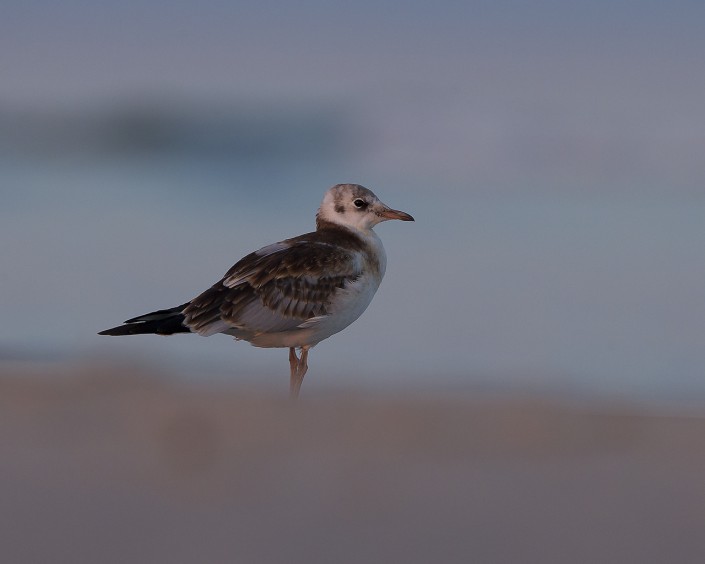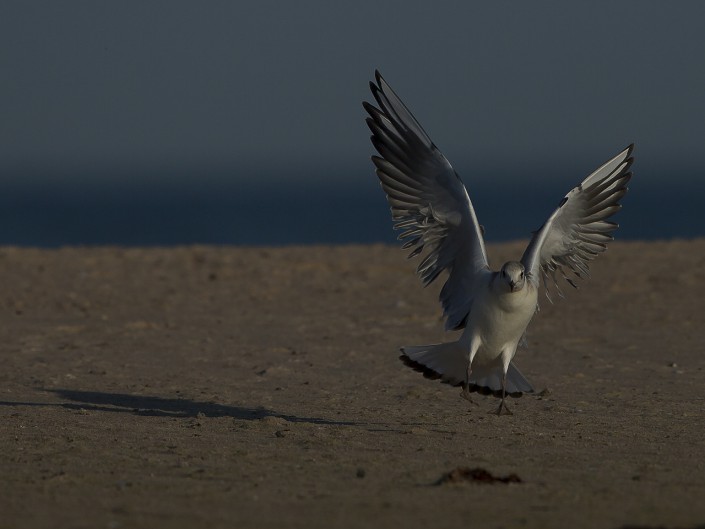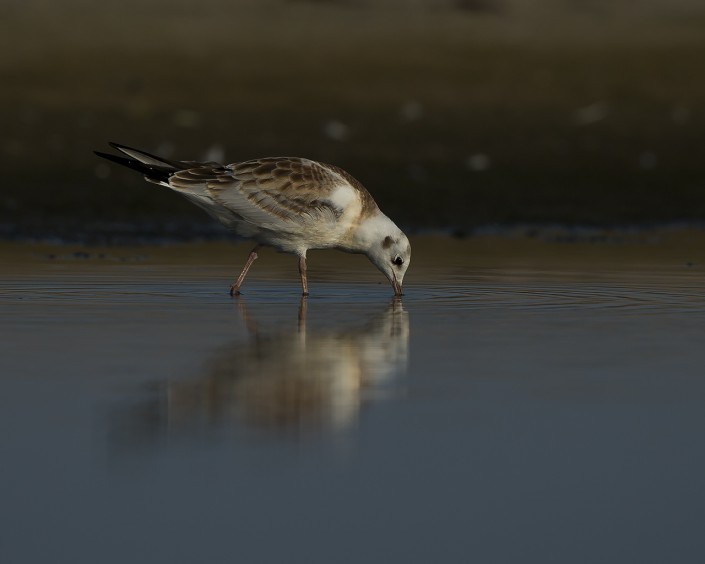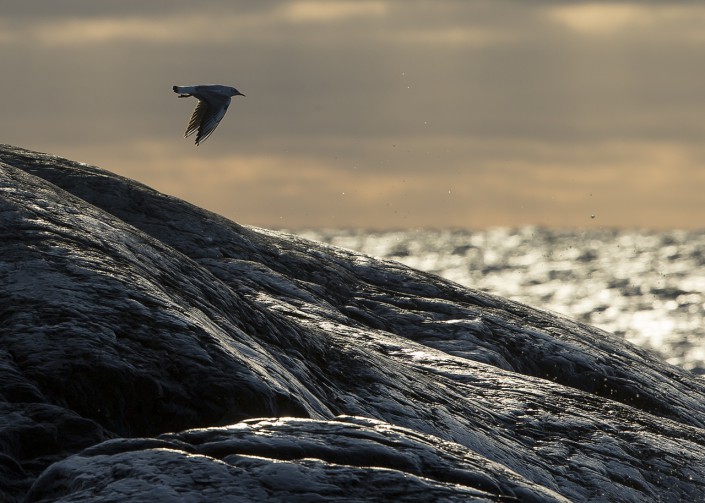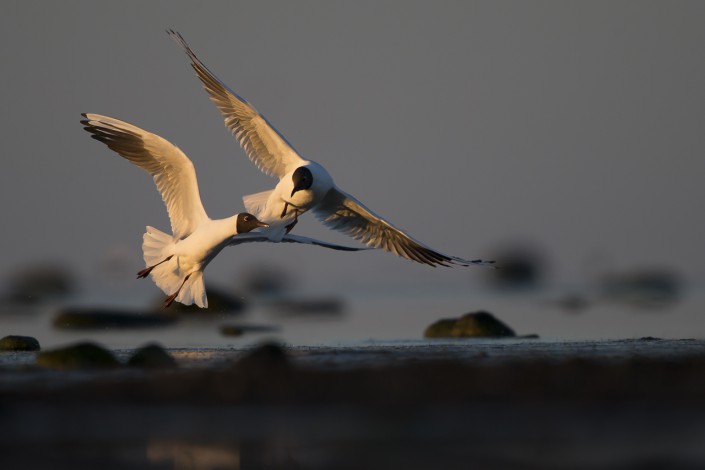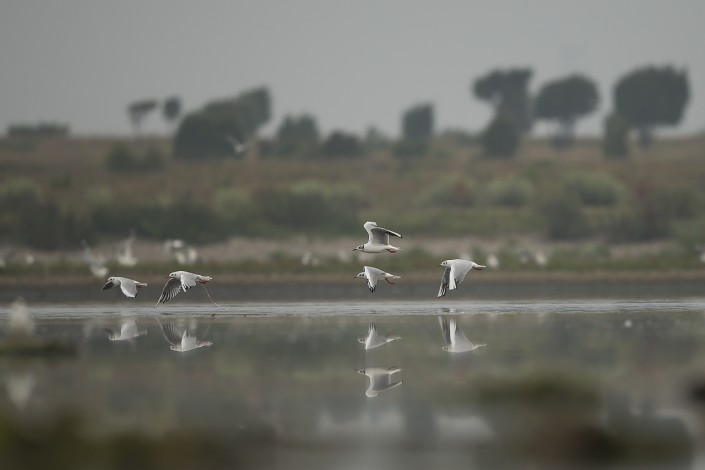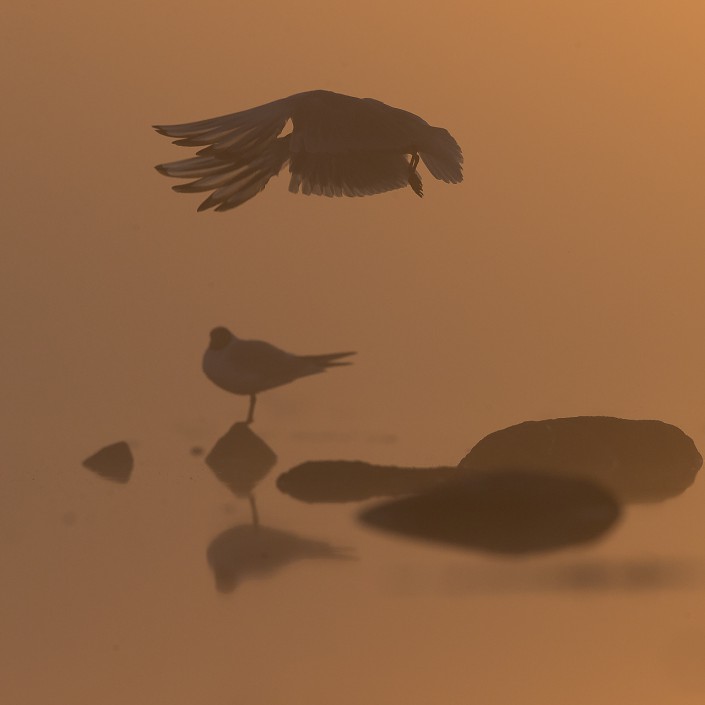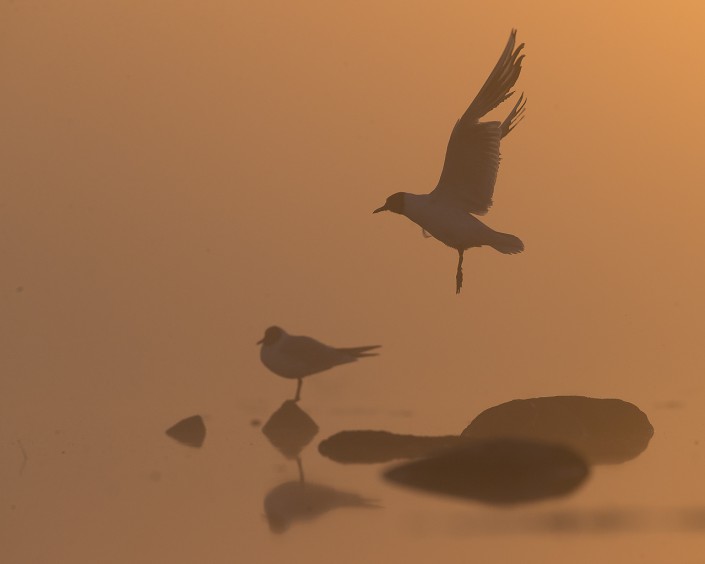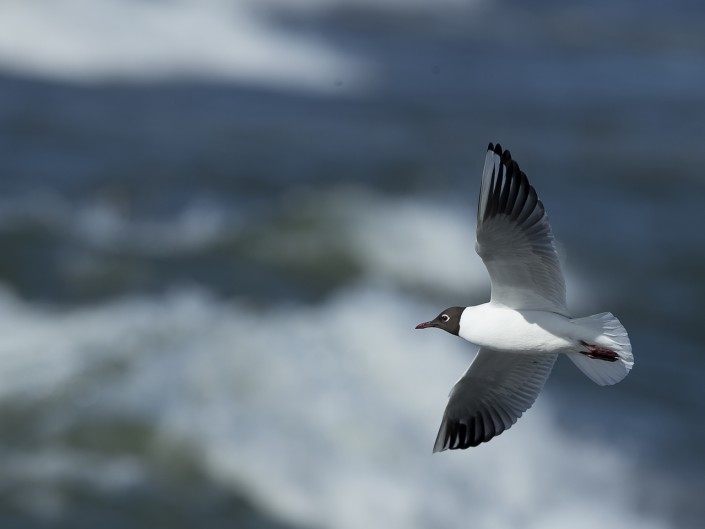This post is also available in: Swedish
Blackheaded gull – Larus ridibundus
Blackheaded gull – Larus ridibundus
The black-headed gull (Chroicocephalus ridibundus) is a small gull that breeds in much of Europe and Asia, and also in coastal eastern Canada. Most of the population is migratory and winters further south, but some birds reside in the milder westernmost areas of Europe. Some black-headed gulls also spend the winter in northeastern North America, where it was formerly known as the common black-headed gull. As is the case with many gulls, it was previously placed in the genus Larus. This gull is 38–44 cm (15–17 in) long with a 94–105 cm (37–41 in) wingspan. In flight, the white leading edge to the wing is a good field mark. The summer adult has a chocolate-brown head (not black, although does look black from a distance), pale grey body, black tips to the primary wing feathers, and red bill and legs. The hood is lost in winter, leaving just 2 dark spots. It breeds in colonies in large reed beds or marshes, or on islands in lakes, nesting on the ground. Like most gulls, it is highly gregarious in winter, both when feeding or in evening roosts. It is not a pelagic species and is rarely seen at sea far from coasts.
The black-headed gull is a bold and opportunistic feeder. It eats insects, fish, seeds, worms, scraps, and carrion in towns, or invertebrates in ploughed fields with equal relish. It is a noisy species, especially in colonies, with a familiar “kree-ar” call. Its scientific name means laughing gull.
Listen to black-headed gull
Recording by Maria Harärä from Xeno canto












